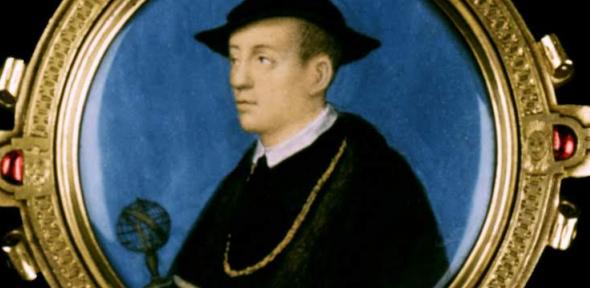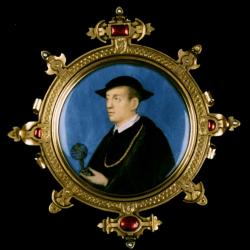In previous Whipple Museum catalogues and labels this miniature portrait (Image 1) is described as originating from the "School of Hans Holbein the Younger", and as depicting Nicholas Kratzer. Both Holbein and Kratzer were employed at the court of King Henry VIII, and both brought their expertise - painting and instrument making respectively - to England from the Continent.
The earliest known miniature painted in England dates from around 1525, and is by Lucas Horenbout. Horenbout is thought by some to be the artist who introduced Holbein to miniature painting. The Kratzer miniature bears a strong resemblance to works by Horenbout, and it can be placed with some confidence in the tradition surrounding him, rather than the "School of Hans Holbein".
Dating the Whipple's miniature portrait is more difficult. Holbein painted a full-sized portrait of Kratzer in 1528 (Image 2), when Kratzer was 41. But the Whipple's miniature portrait appears to be of a younger man and may date from around this period, possibly earlier. Of course, given the lack of records relating to the painting, there is no way of verifying that Kratzer was actually the sitter. However, the painting bears a similarity to Horenbout's work, and it is likely that the painting dates to circa 1530.
Update: In August 2014 the historian of art Lindsey Cox visited the Whipple Museum to study the Kratzer portrait. Cox, a specialist in portrait miniatures, has written a blog post about her research, which raises further questions about the painting. Can it be attributed to the schools of either Holbein or Horenbout? Is the person depicted really Nicholas Kratzer? Might the miniature in fact have been painted in the eighteenth, rather than the sixteenth, century? Seventy-nine years after Robert Whipple purchased this painting, many questions still remain about its true identity.






